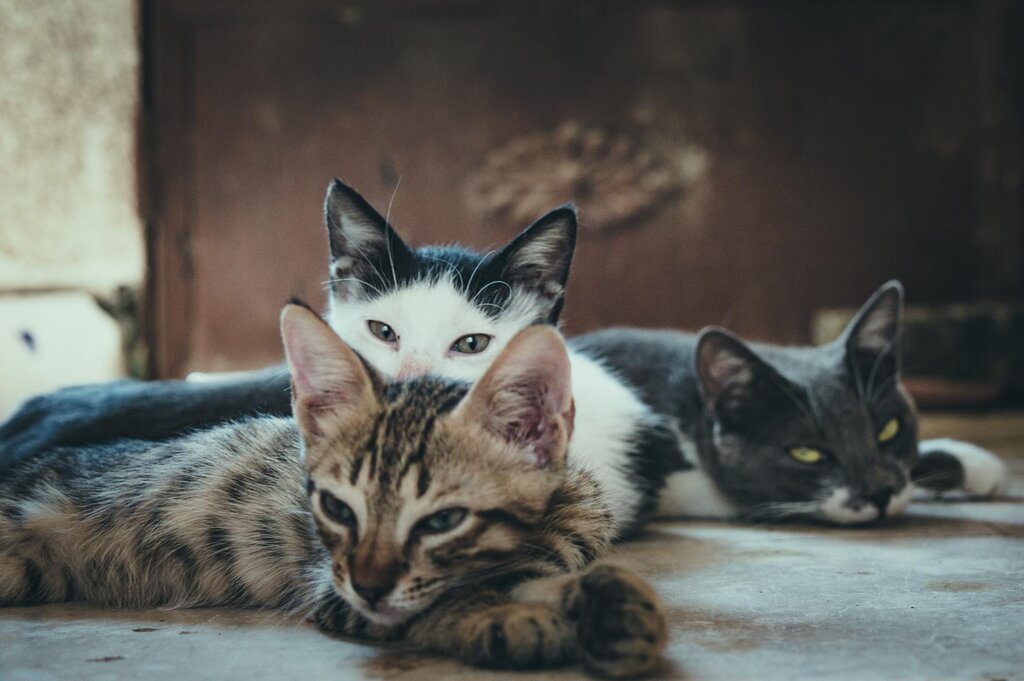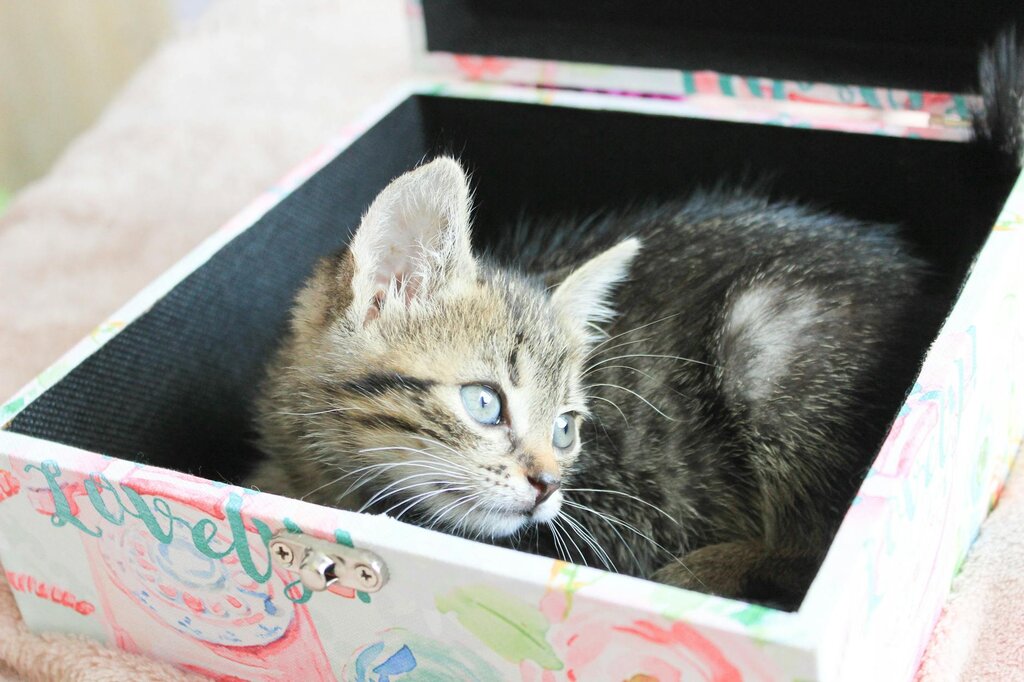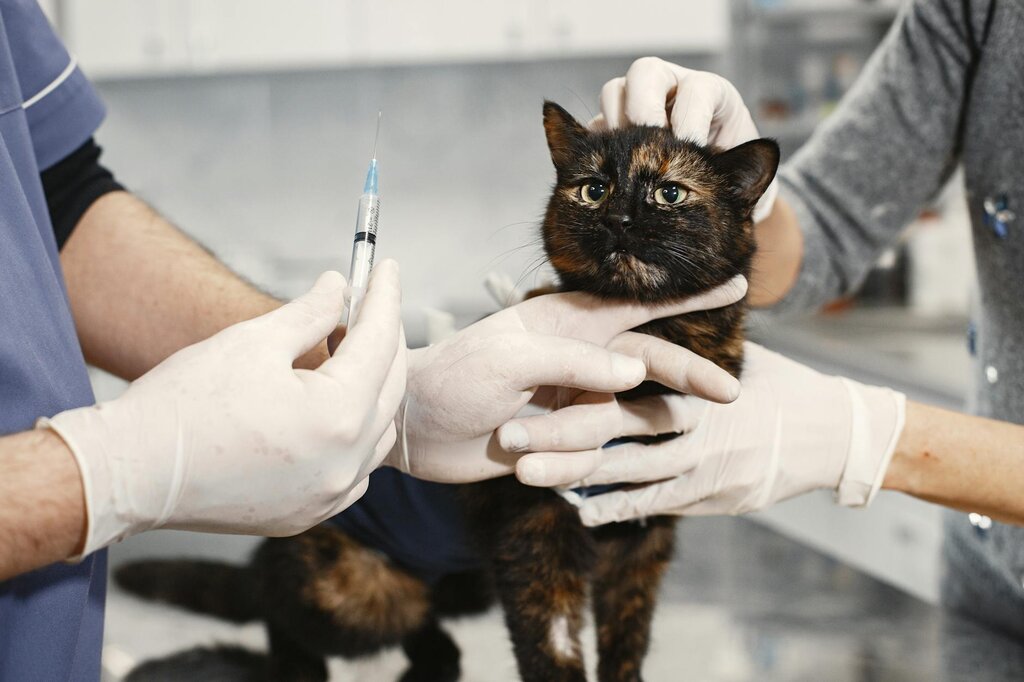Last Updated: 18/12/2025
Cat Flu
Is your cat showing classic signs of the sniffles - like sneezing, gunky eyes, and a snuffly nose? Learn everything you need to know about cat flu: its symptoms, causes, treatment, and how to prevent it.
Author: Dr Maree Monaghan BVSc (Hons)
Reading Time: 3 minutes - short read
Is your cat sneezing? Do they have runny eyes or a runny nose? These can all be signs of Feline Respiratory Disease which is more commonly known as Cat Flu.
What is cat flu?

Cat flu is the common name for upper respiratory infections in cats caused by viruses and bacteria. These infections affect the nose, throat, eyes and mouth.
Cats of all ages and breeds can be affected and this disease is highly contagious.
What causes cat flu?
Cat Flu is caused by infection with one or more of the following viruses and bacteria:
- Feline herpesvirus (FHV-1)
- Feline calicivirus (FCV)
- Bordetella bronchiseptica
- Chlamydophila felis
- Mycoplasma felis
Cat flu is generally spread by direct contact between cats via saliva, tears or nasal discharge and kittens can be infected by their mother soon after birth. It can also be spread indirectly by food bowls, bedding, litter trays or human hands. It cannot be caught by humans or other animals.
How long does cat flu last?
Most cats recover from cat flu within 5 to 10 days, however, if the infection is severe, it can take up to 6 weeks for them to recover. The duration of the condition depends on the type of virus or bacteria that is causing the disease.
Cats who are infected with the feline herpesvirus will carry it for life. These cats can have recurrences of cat flu symptoms throughout their life particularly when they are stressed or their immune system is compromised.
Symptoms

Symptoms of upper respiratory infections in cats include:
- Sneezing
- Discharge from the eyes
- Coughing
- Difficulty breathing
- Fever
- Mouth ulcers
- Eye ulcers
- Lethargy (no energy to play)
- Loss of appetite
Diagnosis of Cat Flu
Your veterinarian will usually be able to diagnose cat flu based on the symptoms your cat is showing.
Occasionally they will need to send swabs to a lab to find out which virus or bacteria is causing the disease in order to prescribe the most effective treatment.

Treatment
As there is no specific medication to cure Cat Flu, the aim of treatment is to relieve the symptoms so the immune system can work more effectively to clear the infection.
Treatments can include:
- Antibiotics
- Pain Medication
- Eye drops or ointment
- Antiviral medication
Severely affected cats who are not eating or drinking may need to be hospitalised and placed on a drip and given nutritional support.
Home Care Remedies for Cat Flu Symptoms
Good nursing care at home is the key to a faster recovery for your cat. Things you can do to help your cat are:
- Provide warm humid air for them to breathe. You can do this by putting them in their carrier and placing a humidifier at the door. You can also or take them into the bathroom with you when you have a shower to allow the steam to open their nasal passages.
- Feed them warm strong smelling soft food. The smell of food is the most important factor influencing a cat's appetite. Cat flu can affect your cat's sense of smell and a sore throat can make eating uncomfortable.
- Keep your cat's eyes and nose clean. Discharge from the nose and eyes can build up on your cat's face particularly if they are too unwell to groom properly. Use a Pet Wipe or a warm moist face cloth to gently clean their face.
- Provide a Lysine supplement. Studies demonstrate that L-lysine supplementation in cats infected with cat flu can reduce both symptoms and viral shedding.
Products to help with managing cat flu at home
Preventing Cat Flu

Vaccination against Cat Flu is vital for preventing and reducing the severity of this disease. Kittens should start their course of vaccinations between 6 and 8 weeks of age and complete their full course of kitten vaccinations as recommended by your vet. Booster vaccinations are usually given every twelve months. Kittens need to be kept indoors and away from other cats until they are fully protected.
Further Reading
Want to read more? Check out our other articles:
History
Our experts continually monitor the health and wellness space and we update our articles when new information becomes available.
Fri Oct 31 2025
Edited by Dr Antonella Virina DVMDr Maree Monaghan BVSc (Hons)
Veterinarian
Dr. Maree graduated from the University of Queensland in 1990 with a Bachelor of Veterinary Science and has worked in a wide variety of practices around Australia and in Papua New Guinea. She has cared for all creatures great and small and has a particular interest in senior pets and horse nutrition

